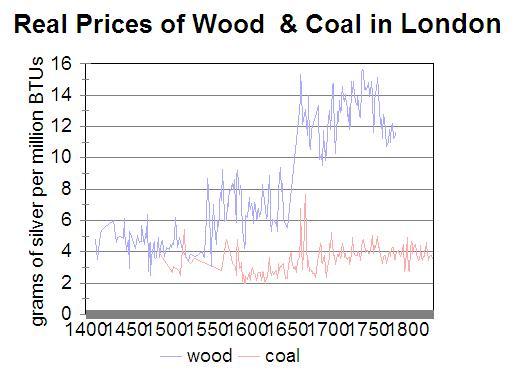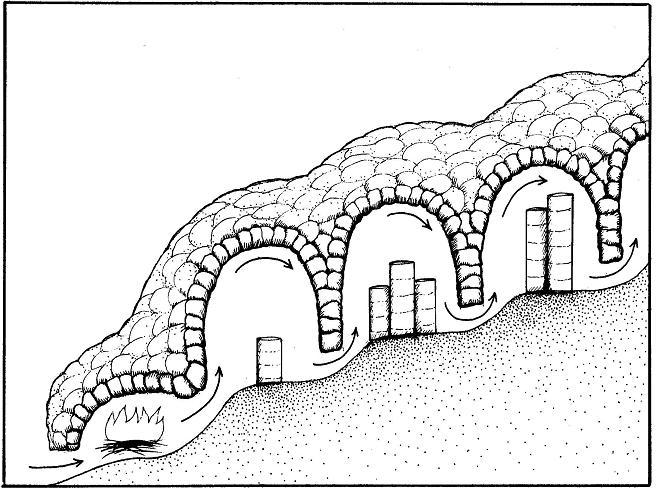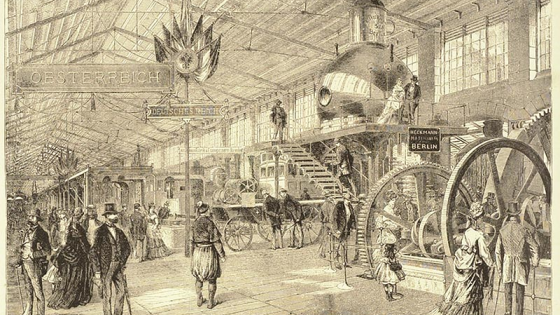Why did the Industrial Revolution take place in eighteenth century Britain and not elsewhere in Europe or Asia? Answers to this question have ranged from religion and culture to politics and constitutions. In a just published book, The British Industrial Revolution in Global Perspective, I argue that the explanation of the Industrial Revolution was fundamentally economic. The Industrial Revolution was Britain’s creative response to the challenges and opportunities created by the global economy that emerged after 1500. This was a two step process. In the late sixteenth and early seventeenth centuries a European-wide market emerged. England took a commanding position in this new order as her wool textile industry out competed the established producers in Italy and the Low Countries. England extended her lead in the late seventeenth and eighteenth centuries by creating an intercontinental trading network including the Americas and India. Intercontinental trade expansion depended on the acquisition of colonies, mercantilist trade promotion, and naval power.
The upshot of Britain’s success in the global economy was the expansion of rural manufacturing industries and rapid urbanisation. East Anglia was the centre of the woollen cloth industry, and its products were exported through London where a quarter of the jobs depended on the port. As a result, the population of London exploded from 50,000 in 1500 to 200,000 in 1600 and half a million in 1700. In the eighteenth century, the expansion of trade with the American colonies and India doubled London’s population again and led to even more rapid growth in provincial and Scottish cities. This expansion depended on vigorous imperialism, which expanded British possessions abroad, the Royal Navy, which defeated competing naval and mercantile powers, and the Navigation Acts, which excluded foreigners from the colonial trades. The British Empire was designed to stimulate the British economy–and it did.
The growth of British commerce had three important consequences. First, the growth of London created a shortage of wood fuel that was only relieved by the exploitation of coal. Figure 1 shows the real price per million BTUs of energy in London from wood and coal in this period. In the fifteenth century, the two fuels sold at the same price per million BTU’s which meant that the market for coal was limited given its polluting character. As London grew after 1500, the price of wood fuels rose and by the end of the sixteenth century, charcoal and firewood were twice the price of coal per unit of energy. With that premium, consumers began to substitute coal for wood. Instead of a wood burning hearth in the middle of a large central room, houses were built with narrow fireplaces and chimneys to burn coal. The coal burning house was invented. It then paid to mine coal in Northumberland and ship it down the coast to London. The coal trade began. On the coal fields (in Newcastle, for instance), Britain had the cheapest energy in the world. Energy was more expensive on the European continent and particularly expensive in China (Figure 2).
Figure 1.
Figure 2.
Second, the growth of cities and manufacturing increased the demand for labour with the result that British wages and living standards were the highest in the world. Figure 3 shows the wages of labours in leading cities in Europe and Asia from 1375 to 1875. The wages have been deflated by a consumer price index so that they show the purchasing power across space as well as over time. A value of one means that a labourer employed full time, full year could earn just enough to keep his family at a subsistence standard of living of 1940 calories per adult male equivalent per day. The budget used to define the consumer price index is set so that most of the spending is on food and most of that is on the cheapest carbohydrate available (oatmeal in northwestern Europe, polenta in Florence, sorghum in Beijing, millet chapatis in Delhi). Only tiny quantities of meat, oil, cloth, fuel, and housing are included in the budget. After the Black Death in the mid-fourteenth century, the standard of living of workers everywhere was high; they typically earned three or four times subsistence. In the ensuing centuries, population growth in Europe and Asia led to falling real wages, so that most workers ended up in the eighteenth century earning just enough to purchase the subsistence standard of living. The only countries to avoid that fate were Britain and the Low Countries. Their populations, in fact, grew more rapidly than those elsewhere, but this effect was offset by the booms in their economies due to international trade. Workers in London and Amsterdam did not, however, buy four times as much oatmeal as they needed for subsistence. Instead they upgraded their diets to beef, beer, and bread, while their counterparts in much of Europe and Asia subsisted on quasi-vegetarian diets of boiled grains with a few peas or lentils. Workers in northwestern Europe also had surplus income to buy exotic imports like tea and sugar as well as domestic manufactures like books, pictures, watches, and better clothes.
Figure 3.
Third, the growth of cities and the high wage economy stimulated agriculture. The strong demand for food and particularly meat, butter, and cheese led to the conversion of arable to pasture, convertible husbandry, and the production of fodder crops (beans, clover, turnips), most of which raised soil nitrogen levels and pushed up the yields of wheat and barley. The urban demand for labour led to the amalgamation of small holdings into large farms, which employed fewer people per acre, a development also entailed by the conversion of ploughed land to grass. Agriculture was revolutionised because cities expanded, rather than the reverse as historians have often maintained.
Success in international trade created Britain’s high wage, cheap energy economy, and it was the spring board for the Industrial Revolution. High wages and cheap energy created a demand for technology that substituted capital and energy for labour. These incentives operated in many industries. Pottery, for instance, was manufactured in both England and China. The design of the kilns differed greatly, however. English kilns were cheap to build but very fuel inefficient; much of the energy from the burning fuel was lost through the vent hole on the top (Figure 4). The typical Chinese kiln, on the other hand, was more expensive to construct and, indeed, required more labour to operate. Figure 5 shows how heat was drawn into the chamber on the left and then forced out a hole at floor level into a second chamber. The process continued through many chambers until the air, by then denuded of most of its heat, finally exited up a chimney. In England, it was not worth spending a lot of money to build a thermally efficient kiln since energy was so cheap. In China, however, where energy was expensive, it was cost effective to build thermally efficient kilns. The technologies that were used reflected the relative prices of capital, labour, and energy. Since it was costly to invent technology, invention also responded to the same incentives.
Figure 4. English kiln
Figure 5. Chinese kiln
The famous inventions of the Industrial Revolution were responses to the high wages and cheap energy of the British economy. These inventions also substituted capital and energy for labour. The steam engine increased the use of capital and coal to raise output per worker. The cotton mill used machines to raise labour productivity in spinning and weaving. New technologies of iron making substituted cheap coal for expensive charcoal and mechanised production to increase output per worker.
These technologies eventually revolutionised the world, but at the outset they were barely profitable in Britain, and their commercial success depended on increasing the use of inputs that were relatively cheap in Britain. In other countries, where wages were lower and energy more expensive, it did not pay to use technology that reduced employment and increased the consumption of fuel.
The French government was very active in trying to promote advanced British technology in the eighteenth century, but its efforts failed since the British techniques were not cost effective at French prices. James Hargreaves perfected the spinning jenny, the first machine that successfully spun cotton, in the late 1760s. In 1771, John Holker, an English Jacobite who held the post of Inspector General of Foreign Manufactures, spirited a jenny into France. Demonstration models were made, but the jenny was only installed in large, state supported workshops. By the late 1780s, over 20,000 jennies were used in England and only 900 in France. Likewise, the French government sponsored the construction of an English style iron works (including four coke blast furnaces) in Burgundy in the 1780s. The raw materials were adequate, the enterprise was well capitalised, and they hired outstanding and experienced English engineers to oversee the project. Yet it was a commercial flop because coal was too expensive in France.
Since the technologies of the Industrial Revolution were only profitable to adopt in Britain, that was also the only country where it paid to invent them. The ideas embodied in the breakthrough technologies were simple; the difficult problem was the engineering challenge of making them work. Responding to that challenged required research and development, which emerged as an important business practice in the eighteenth century. It was accompanied by the appearance of venture capitalists to finance the R&D and a reliance on patents to recoup the benefits of successful development. The Industrial Revolution was invented in Britain in the eighteenth century because that was where it paid to invent it.
The success of R&D programs in eighteenth century Britain depended on another characteristic of the high wage economy. In the seventeenth and eighteenth centuries, the growth of a manufacturing, commercial economy increased the demand for literacy, numeracy and trade skills. These were acquired through privately purchased education and apprenticeships. The high wage economy not only created a demand for these skills, but also gave parents the income to purchase them. As a result, the British population was highly skilled (by international standards), and those skills were necessary for the high tech revolution to unfold.
The Industrial Revolution was confined to Britain for many years, because the technological breakthroughs were tailored to British conditions and could not be profitably deployed elsewhere. However, British engineers strove to improve efficiency and reduced the use of inputs that were cheap in Britain as well as those that were expensive. The consumption of coal in steam engines, for instance, was cut from 45 pounds per horse power-hour in the early eighteenth to only 2 pounds in the mid-nineteenth. The genius of British engineering undermined the country’s technological lead by creating ‘appropriate technology’ for the world at large. By the middle of the nineteenth century, advanced technology could be profitably used in countries like France with expensive energy and India with cheap labour. Once that happened, the Industrial Revolution went world wide.







